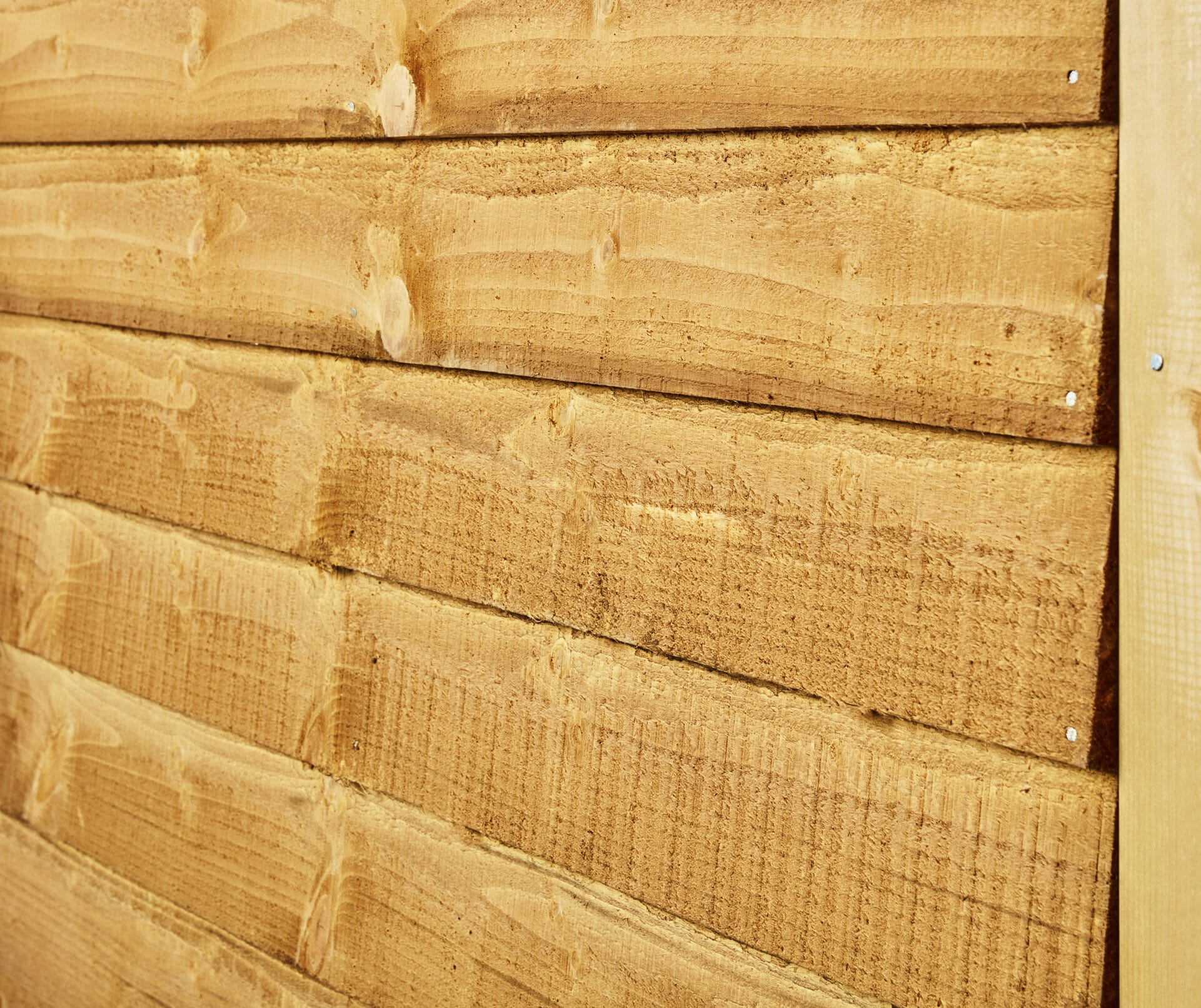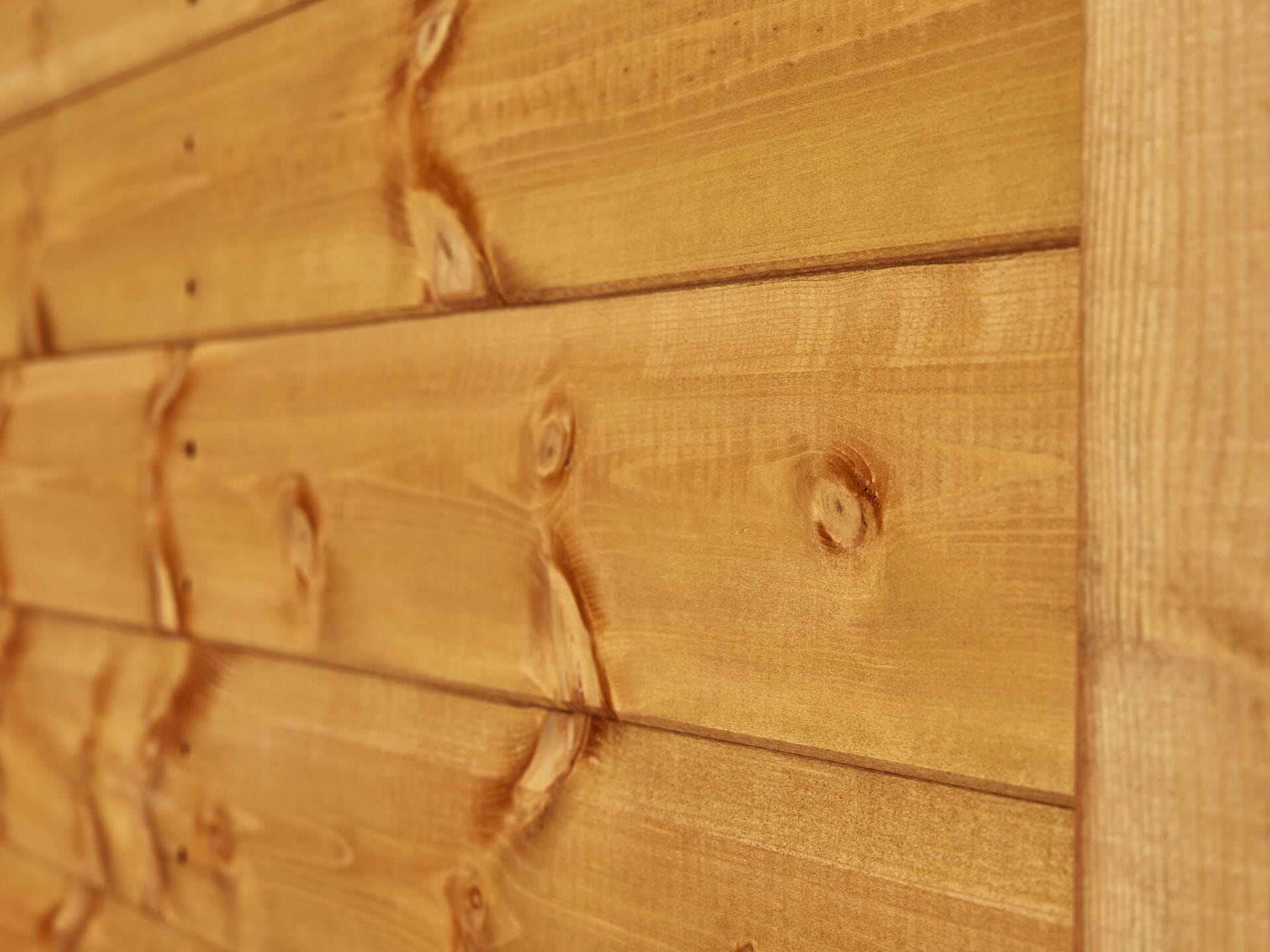What is the Difference Between Shiplap, Overlap and Tongue and Groove Cladding?
When it comes to buying a new shed, there are a few things you should consider before making a purchase. You need to think about the space you have available, whether you want an apex or pent roof design, but also, the type of cladding used to build your shed. Cladding can have an influence on the insulation, weather resistance and appearance of a shed, and typically, there are three options available. You can choose from shiplap, overlap, and tongue and groove cladding.
In this article, we will explain the difference between all three in more detail to help you make the right decision for your garden.
What is Overlap Cladding?
Overlap has a simple design and is easy to produce. The horizontal panels that make up your shed wall overlap each other, with the bottom of each slat going over the top of the next.
The overlapping of the wooden boards allows rainwater to run off easily, keeping your shed watertight. However, overlap cladding is not airtight, so draughts and damp air can be a problem if you plan on using the shed for anything other than storage. If you intend to spend a lot of time in your shed for DIY projects, hobbies or any other reason, you may want to consider a different cladding option.
Thanks to the simplicity of their design, sheds with overlap cladding are easy to build, which makes them cheaper. Overlap is often used for entry-level models in domestic gardens, perfect for storing gardening equipment, supplies and anything you don’t have space for in the house.
Advantages of overlap cladding
Low construction cost. Sheds with overlap cladding have a simple design and are easy to build, making them cheaper than other alternatives.
Ideal for storage. Overlap cladding is a great option for storage sheds. It will keep all your equipment secure and dry.
Disadvantages of overlap cladding
Not airtight. This type of cladding isn’t airtight, making it susceptible to draughts and damp air. It may not be warm enough for anything other than storage use during colder months.
Cannot attach shelving to the walls. You can’t attach shelving to the walls of your shed if it’s built with overlap cladding.
What is shiplap cladding?
Shiplap cladding also uses overlapping wooden panels, but they overlap in a way that creates a flat surface. The boards have overlapping lips that interlock, making your shed waterproof and airtight.
Shiplap cladding is more expensive than overlap, thanks to its more complex design. But you’re paying for extra protection against the UK’s unpredictable weather conditions, and it allows you to use your shed for more than just storage. Sheds with shiplap cladding also offer extra security and visual appeal, so they’re perfect for those who want a garden shed they can use as a workshop.
Advantages of shiplap cladding
Weather resistant. Sheds with shiplap cladding are watertight and airtight. This protects the shed from rainfall and draughts, making them ideal for use as workshops.
Visual appearance. The design means the outer walls have a flat surface which is more visually appealing than an overlap alternative.
Disadvantages of shiplap cladding
More expensive. The downside to shiplap cladding is it’s more expensive than overlap. If you only plan on using your shed for storage, it probably isn’t worth spending the extra money.
What is tongue and groove cladding?
Tongue and groove is the strongest type of shed cladding and is commonly used for larger sheds and other outdoor buildings. The wooden planks used in construction are designed to slot into each other, interlocking and leaving no gaps. The result is a strong, durable shed with flat walls and an attractive appearance.
The interlocking design keeps the shed well insulated and means no moisture or draughts can get inside, making tongue and groove cladding the best choice if you plan on spending a lot of time inside your shed. The strength, durability and weather resistance come at a higher price though. Tongue and groove is the most expensive type of cladding due to higher-product quality and longer construction time.
Advantages of tongue and groove cladding
Excellent weather resistance. Tongue and groove cladding is the best type of cladding for keeping your shed warm and dry. It is well-insulated, watertight and airtight.
Visual appearance. Sheds with tongue and groove cladding look stylish and high-quality.
Strong construction. The interlocking wooden planks provide a strong, durable design and extra security.
Disadvantages of tongue and groove cladding
Most expensive. Tongue and groove is the most expensive option when it comes to cladding. If you’re just looking for garden storage or a cheap outdoor workshop, then overlap or shiplap might be a preferred option.
Power Sheds use either 12mm shiplap tongue and groove or 10mm overlap cladding for all our sheds. You can explore our shed collection in different sizes here.


